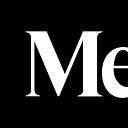Everything is a decision, even if it doesn’t feel like it
⚖️ You make somewhere between 122 and 35,000 decisions per day
Issue #106: speaking with an accent at work, the etymology of “gay,” and dark patterns
By Zulie @ Medium
Every day, I make an uncountable number of decisions (sources differ on how many — the popular number cited is 35,000 per day, while others estimate it’s in the more humble hundreds). Get up or call in sick? Oatmeal or French toast? Open Slack or a book?
I don’t even consider these decisions since I typically pick the “default” option (get up; oatmeal; Slack) without much thought. Researchers say brains tend to pick the most familiar option to conserve energy because making decisions is hard. But make no mistake — neutral choices are still choices.
I liked how UX professional Andrew Tipp writes about the myth of neutral choice in the context of UX design. He compares behavioral nudges, or features that influence and guide users toward a desired action or decision, against dark patterns, which are deceptive techniques designed to manipulate user behavior. (Think: making it harder versus easier to cancel online subscriptions.)
Why not just make neutral design decisions that don’t impact users at all? It’s impossible. “All of these choices are active decisions — even the ‘default’ layout. That means as the designer there is no ethically neutral option, because you’re always making a decision one way or the other,” he explains.
In our personal lives, seemingly “neutral” choices are the easy route, and a series of easy choices can turn into a routine (and a life) that can be hard to change. Ex-Google Chief Decision Officer Cassie Kozyrkov writes that after ten years in her role, she needed a deadline to see her decision to go or stay in her role for the decision it was. “My deadline was coming up fast. And that deadline was a good thing; I was getting far too comfortable. I was cheerfully handing over my best ideas without taking a stab at developing them in the wild.” She decided to leave her job and strike out on her own — the hard option — because when she got to the deadline, it recontextualized the “choice” to go to work next Monday as the decision it was to keep the status quo.
Actively making choices is hard! But don’t underestimate the impact of the accumulation of decisions on your life. If there’s a goal you want to pursue, whether that’s quitting your job, learning a new language, or even just getting up when your alarm goes off instead of hitting the snooze, you can recontextualize the choice like Tipp suggests. Paraphrasing him, there’s often no neutral option: every decision can be an active choice to act in your best interests or against them.
What else we’re reading
- I’m a linguistics and etymology nerd, so I loved this deep dive into the history of the word “gay” from writer and political consultant Joe Duncan. He starts in 700 BCE with the Ancient Greek root word “γαι” and follows it through the centuries to today’s modern use. “Appropriating the word ‘gay’ stripped its power as a slur. ‘Gay’ was suddenly worn like a badge of honor, describing identities that had been in hiding since time immemorial,” he writes.
- In a similar linguistics thread, this post about the rise and fall of the phrase “mentally retarded” by writer and editor Rick Hodges fascinated me as he tracks how medical words that define “undesirable” conditions become insults, and ultimately lose any connection to their original diagnosis, like “idiot” or “moron” — and why that’s a problem. “Don’t use ‘intellectually disabled’ or ‘special needs,’ as an insult, because there’s nothing wrong with being intellectually disabled,” writes Hodges.
- Spanish UX designer Raquel Piqueras writes that it took her time to appreciate her accent, especially in the context of work. “In the early days, I would avoid presentations at all costs. I was concerned that my strong accent would get in the way and people would not understand the content…As I started working with other peers with accents, I also started to appreciate them. They brought uniqueness, and it was a reflection of their cultural background and identity.”
Your daily dose of practical wisdom: about farming
Farmer and businessman Chris Newman reflects that most people start their farming business backward — they buy land, learn to grow food, figure out how to raise and butcher animals, and then try to build the business aspect of the farm. Instead, Newman recommends starting with marketing. “[C]reate your market by buying products from other farmers and selling them, then plan your own farm to plug into your existing market.” This advice is applicable not just for farming but for just about any type of business.
Learn something new every day with the Medium Newsletter. Sign up here.
Edited and produced by Harris Sockel and Scott Lamb
Questions, feedback, or story suggestions? Email us: tips@medium.com

